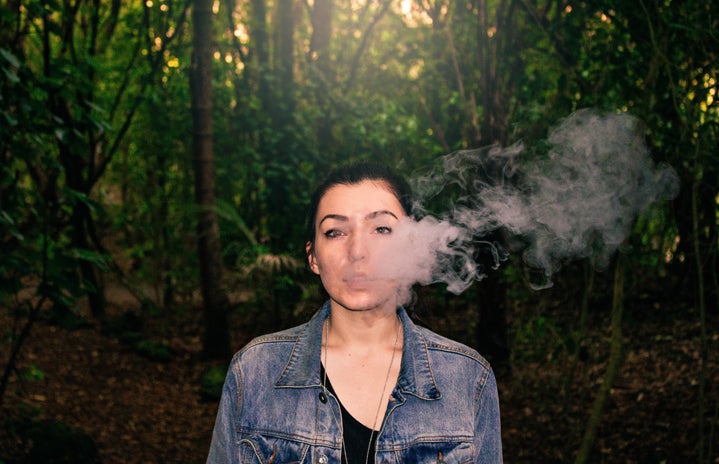The annual cigarette sales reported by the Federal Trade Commission revealed that sales from the largest companies in the United States rose from 202.9 billion dollars in 2019 to 203.7 billion the following year. Cigarette sales have increased for the first time in two decades, making Americans question the cause of the escalation.
The general consensus holds that smoking is detrimental to our health; therefore, people should refrain from purchasing and using cigarettes. After all, cigarette smoking is responsible for over 480,000 deaths per year in the U.S. alone, according to the CDC, with more than 41,000 deaths resulting from secondhand exposure.
Historical Trends of Smoking in the Film Industry
During the 1900s, tobacco companies merged efforts with film studios to promote their products by paying notable actors to market cigarettes through the screen. Numerous iconic movies integrated smoking into the leading characters’ roles to give their personality an edge or highlight the social norms present in the film’s setting: Breakfast at Tiffany’s (1961), Grease (1978), and The Breakfast Club (1985) are among a long list of influential films that portray smoking. Surgeon General’s notable 1964 report marked the initial widened concerns of the act’s accompanying health risks, but the film industry continued to use the theme in an array of movies.
Research has shown that the exposure of smoking depictions through the media influences an adolescent’s likelihood of initiating the act. A report from the CDC in 2019 noted that 87% of top-grossing, youth-related movies with smoking fail to carry an MPA smoking label. That same year, about 30% of high school students said they had tried two or more tobacco products in their lifetime. As many know, because teenagers’ brains are still developing it’s more likely they will be swayed by the content they consume in the media. The role of movies and popular television shows in the prevalence of youth smoking is therefore being examined by researchers.
Aestheticization of Smoking in the Media
If you search “cigarette smoking aesthetic” on Pinterest or Instagram, a vast amount of images will fill your feed. The photos look artistically pleasing as they depict a generalized enjoyment of smoking; the moody atmosphere and social aspect helps create curiosity and fascination for using cigarettes. Many people in the images are also conventionally attractive, or they appear wealthy by smoking on a private jet or by a pool. These factors contribute to a desire to imitate the actions among some adolescents, who may want to fit in or raise their self-esteem by appearing edgy or rebellious.
The presence of social media also pushes kids to grow up faster by exposing them to content they otherwise wouldn’t see. Consequently, some teenagers may engage in harmful behaviors to show their friends they should be taken more seriously. Ample research has established that adolescents are more susceptible to reckless behavior because their prefrontal cortex has not fully developed; therefore, they are more likely to become addicted to alcohol and drugs if they try substances at that age. Consuming media of smoking reinforces the attitudes some young adults carry, which may ultimately serve as the enticing force for them to begin or continue smoking.
The Pandemic’s Role in All of This
While social media has likely contributed to overall trends of cigarette sales, boredom and isolation accompanying the Covid-19 lockdown have presumably contributed to the rising cigarette sales in 2020. Financial burdens from the economic fallout have exacerbated stress and heightened emotions among millions of families, and the strain on their mental health may have influenced some to resume smoking or start as a coping mechanism. The absence of smoking bans at home provide an outlet for continued use as well.
The additional free time has notably increased online activity among users, which may have exposed more people to media characterized by smoking. The number of Youtube’s premium subscribers rose from 18 million in 2019 to 30 million in 2020—accumulating more than 50% of total subscribers in a year alone. Instagram’s total annual users increased by 0.2 billion that same year, and TikTok’s annual revenue increased by about $1.55 billion.
What’s to Come?
In 2021, the Tobacco Tax Equity Act was introduced to the Senate, which proposed to equalize tax rates on tobacco products and raise the excise tax on cigarettes. The bill aimed to close loopholes in the tax code and help reduce youth tobacco use, including the use of e-cigarettes. Currently, the federal cigarette tax is $1.01 per pack to assist public health efforts in this issue. It is likely that cigarette taxes will continue to rise in the future, which would help discourage smoking.
Government efforts are essential in mitigating the negative impacts of smoking, but the media also plays a role in influencing users’ behavior and attitudes surrounding cigarette use. Given the industry’s history of portraying smoking in various films, it will be no surprise if they continue to incorporate it in the future. While movies depicting previous generations may accurately reflect the norms instilled for smoking, many social media platforms provide a plethora of content that arguably aestheticizes smoking in current times. It is imperative that young teenagers receive a robust education on the detriments of smoking, and more preventive services and rehabilitation programs should be accessible for struggling adults.


